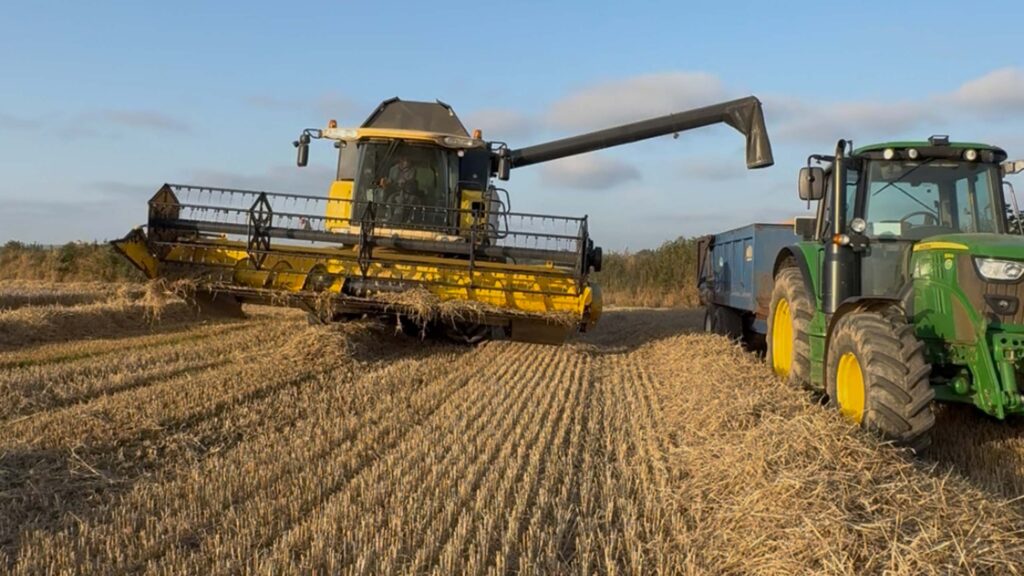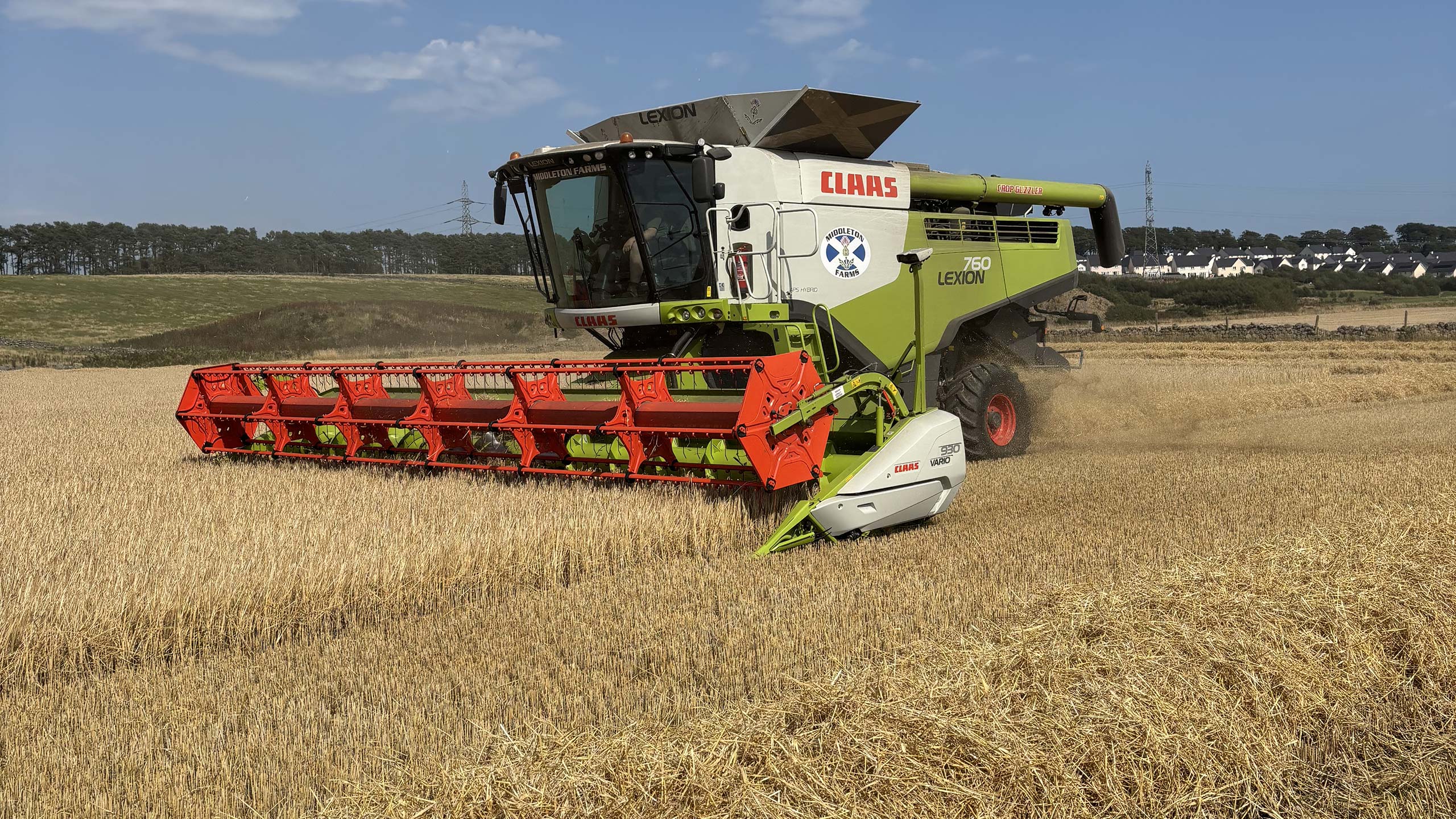Harvest 2025: Earliest finish in living memory for many farmers
 Andrew Tamblyn's harvest near Liskeard in Cornwall © Ruth Wills
Andrew Tamblyn's harvest near Liskeard in Cornwall © Ruth Wills As harvest wraps up in some areas, for some it has been the earliest finish in memory.
There are mixed reports on yields and quality, with some crops suffering from the dry weather.
Northumberland
Harvest has been a “soft pillow dream”, says Glen Sanderson, and a “sharp contrast to last year”, finishing on 7 August for the first time in 50 years, with the final two lorry loads leaving Eshott South Farm, near Felton, on 14 August.
Graham averaged 10t/ha, with Bamford on lighter land and Extase at 8-9t/ha.
See also: Several wheat varieties see dramatic falls in yellow rust ratings
The Vegas oilseed rape recorded a moisture content of 7-8%, providing pleasing yields of 5t/ha, he says.
With this year’s crop being drilled into hard ground due to low rainfall, the forecast rain next week will be a welcome relief.
Glen’s Tardis and Kitty winter barley were also strong at 8-9t/ha and 15% moisture content.
With the weather as great as it has been in the North, this is a notable harvest for Glen.
“I will remember it for as long as I live,” he says.
County Londonderry
Robert Craig’s regenerative approach to harvest is nourishing strong results at Carse Hall, near Balleykelly.
His approach is “old style, but driven by the younger generation”, he says, and he is in his third year of no insecticide or fungicide, with visible year-on-year improvements.
His four-way mix of wheat achieved 7t/ha, while the eight-variety mix of winter barley was also reasonably pleasing, given the limited nitrogen applications for both.
The oilseed rape was grown in a mix with beans, sunflowers and buckwheat, and although suffering from pigeon damage, it achieved a pleasing 4.9t/ha.
Staffordshire
Near Stoke on Trent, Stephen Sant’s north-east facing fields have achieved his highest wheat yields, averaging 8.6t/ha across 60ha of Graham, Extase and Dawsum, at 13-15% moisture.
Despite this, he has sold some for wholecrop due to poor wheat prices.
Meanwhile, his 28ha of Mascani oats came in at 4.9t/ha.
However, Stephen’s oilseed rape has been the highlight, achieving 4.7t/ha over 24ha.
“I’m over the moon,” he says. But it hasn’t been easy, considering the early starts needed to maintain the moisture content of 6.5-7.5% – combining had to be done between 4am and 9.30am.
“The short period of heavy rain early in the season got us out of jail, as the heavy soil held on to the moisture,” he says.
However, the intermittent rain during the winter barley harvest raised the moisture to 16%, while sun damage was to blame for a slightly low yield of 6.1t/ha.

Reader Ian sent in this photo of the Firefox spring barley at Middleton Farms near Aberdeen
Cornwall
Harvest is progressing well for Andrew Tamblyn at Pengelly Barton, near Liskeard, who has caught up despite a combine fire at the beginning of the season.
He is halfway through his 34ha of Graham and Typhoon wheat, which has yielded 8.6t/ha.
Moisture contents have been good, with the wheat starting at 18-19%, but now coming off at 15%. Straw has also been plentiful.
But the 10ha of spring barley was hampered by the dry weather and yielded just 4.9t/ha.
However, a highlight was 34ha comprising Cassia, Tardis and Caravelle winter barley, which was one of the best crops he’d seen for years.
“It yielded 8.6t/ha which is at least half a tonne better than the past five years,” he says.
“We had rain at the right time to keep it growing.”
Andrew lost only one day of progress to the combine fire. “We had a contractor in to finish off the winter barley,” he says.
He hopes to move on to the 23ha of spring oats next week.

